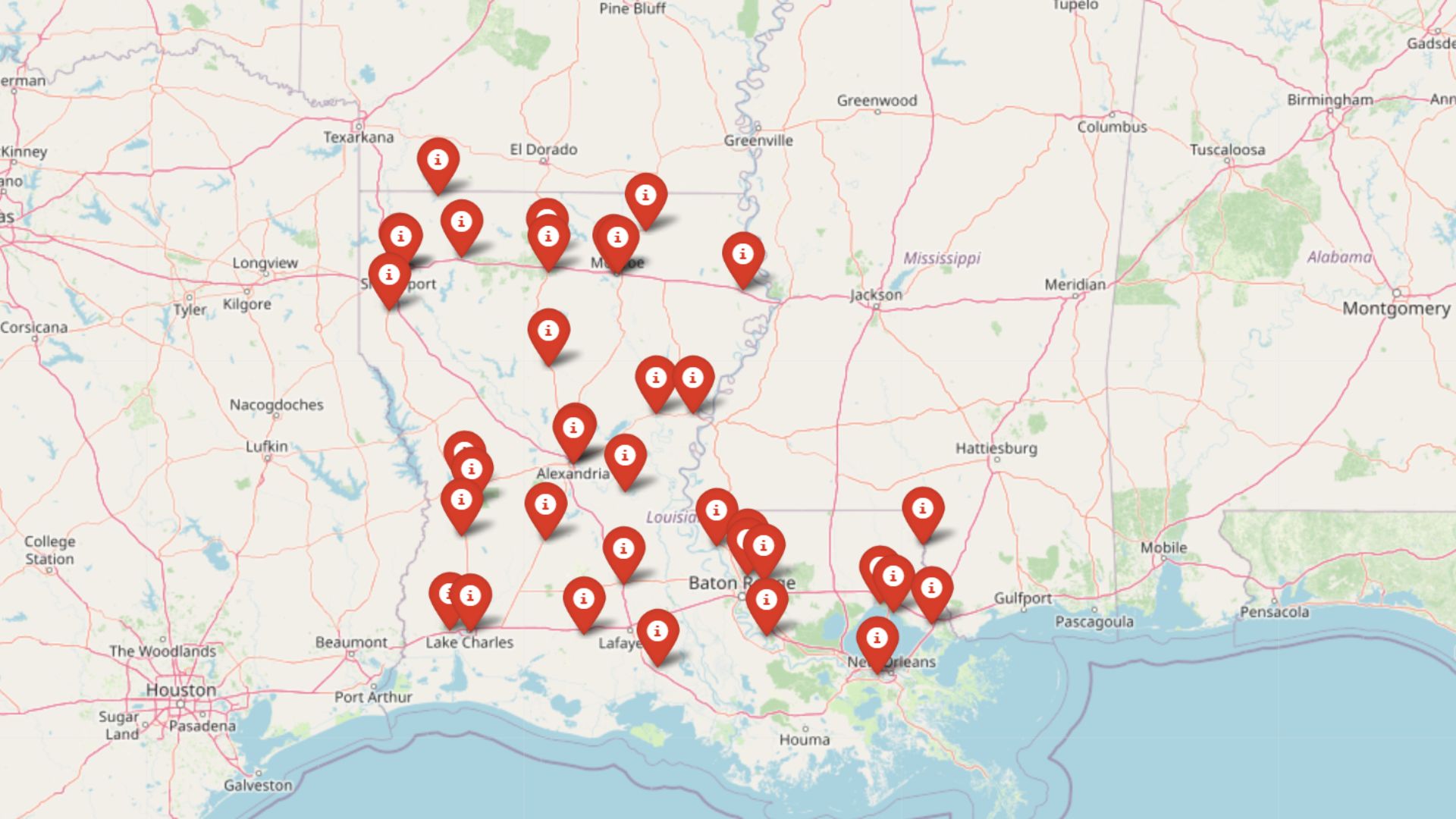
If you’re anything like me, sometimes you just crave a peaceful escape from the buzz of city life. Western Louisiana is sprinkled with hidden gems—small towns where time seems to slow down and nature wraps you in its quiet embrace.
I’ve journeyed through this region and discovered places where the forests are dense, the communities are tight-knit, and the stars shine brighter against the night sky. These towns aren’t just destinations; they’re tranquil retreats where you can truly unwind.
Let me take you through my personal countdown of the 25 most secluded towns in Western Louisiana, each offering its own unique slice of serenity and charm.
25. Merryville – River-Edge Quiet on the Texas Line
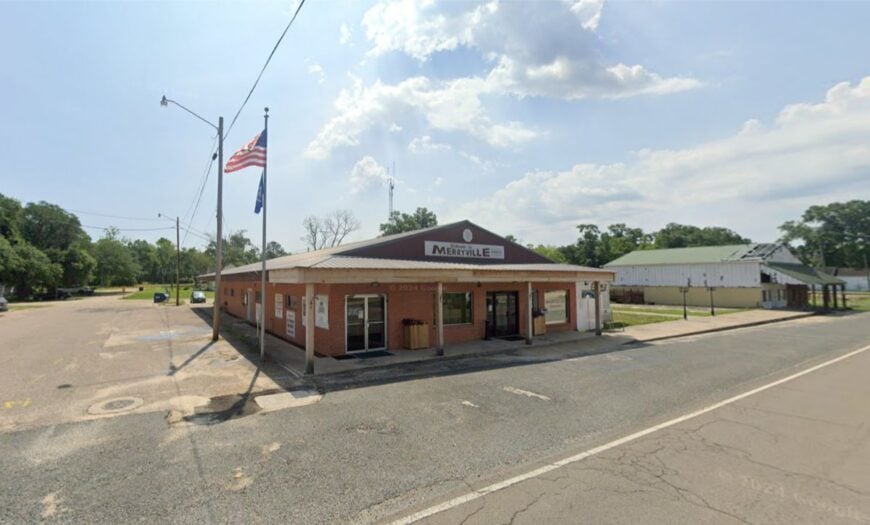
Merryville sits against the Sabine River like a pocket of time the interstates forgot. Tall pines and bottomland hardwoods blur the edges of town, and old sawmill stories still ride the evening air.
Folks drift to the river for catfish and sandbar picnics, or poke around the small local museum and vintage storefronts that survived the boom-and-bust lumber era. Hunt leases and timber work stitch together the local economy, with a few cafés and feed stores keeping company with church bells.
On summer nights, whip-poor-wills outsing the highway far to the south, and the sky opens wide enough to chart your thoughts by stars. Trails, quiet roads, and the slow Sabine make it feel more like a retreat than a town. It’s the kind of place where a front-porch swing becomes a clock.
Where is Merryville?

Set in western Beauregard Parish, Merryville hugs the Louisiana–Texas border on LA-110 and U.S. 190, about 20 miles west of DeRidder. There’s no interstate nearby—just two-lanes threading pine and pasture.
You reach it by drifting west through long stretches of forest and river flats. It’s close enough to find, but far enough to reset your breathing.
24. Rosepine – Pines, Porches, and an Unhurried Main Street

Rosepine feels gently tucked between timberlands, where porches face quiet lanes and longleaf pines frame every view. The town grew around rail and lumber, and that heritage still lingers in tidy grid streets and mill-town modesty.
Locals head to parks for youth ballgames, slip down to Bundick Lake for fishing, or day-trip into nearby trails when the weather turns gold. Small businesses, the school district, and timber keep the lights on, while many residents savor a shorter commute in exchange for a slower life.
At dusk, you’ll catch the scent of resin and cut grass as cicadas strike up their steady chorus. Nothing is flashy here; everything feels earned. Rosepine’s calm has a way of untying the knots you didn’t know you were carrying.
Where is Rosepine?
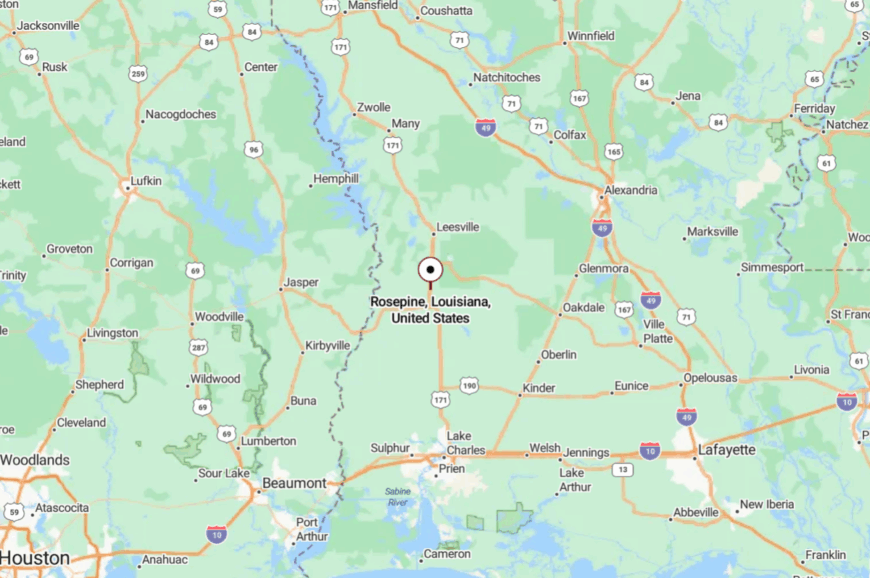
Straddling the Beauregard–Vernon Parish line, Rosepine sits along U.S. 171 about 5 miles south of DeRidder. It’s outside the quick orbit of Lake Charles and Leesville, buffered by timber tracts in every direction.
The approach is all two-lane rhythm and green tunnels of pine. By the time you roll in, your shoulders have already dropped.
23. Starks – Edge-of-the-Map Community in the River Bottoms
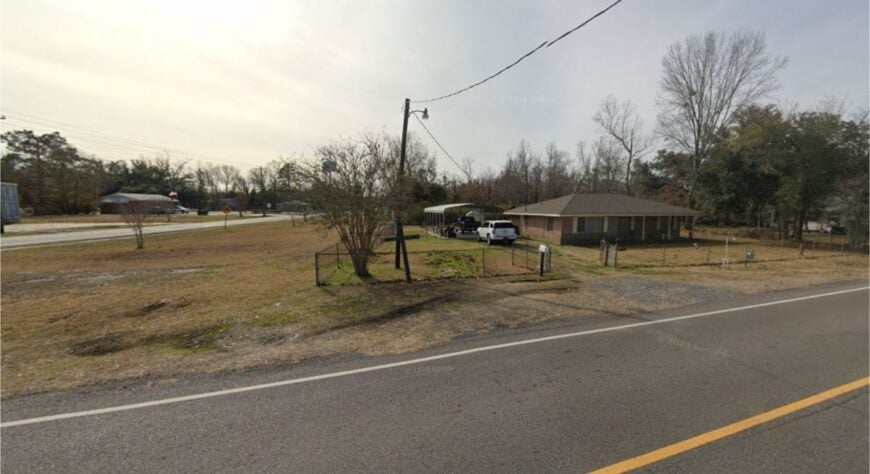
Starks is a border hamlet that feels like the map runs out at the Sabine. A handful of stores and a school anchor life, but the real rhythm belongs to pines, pastures, and the slow slide of the river.
Locals fish oxbows, gather for Friday night ball, or scout quiet parish roads for deer at first light. Timber, ranch work, and plant jobs across the line help pay the notes, but evenings belong to long porches and long shadows.
Cell signals can be as thin as the fog threading the bottoms at dawn. Traffic is something you hear about, not hear. Starks is content with its own small circle of light.
Where is Starks?
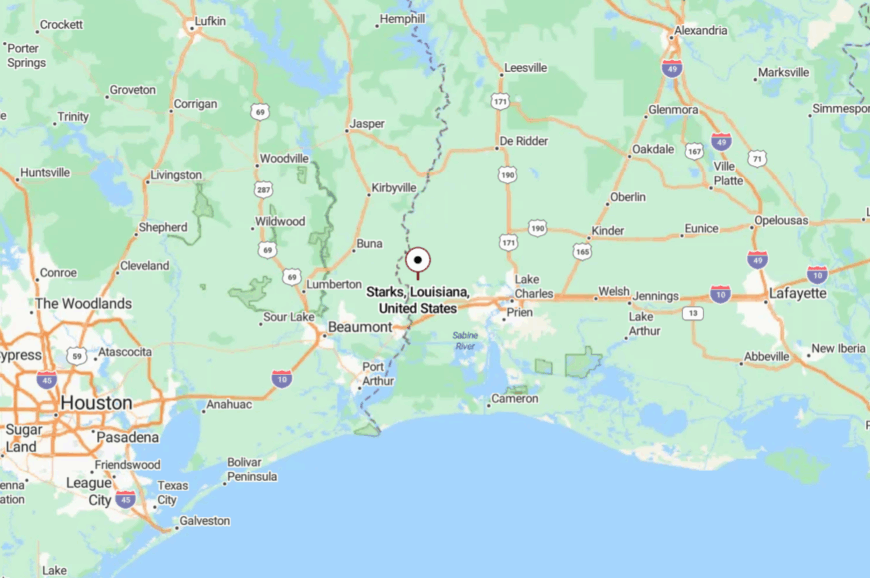
In far western Calcasieu Parish, Starks sits on LA-12 near the Texas state line, roughly 35 miles west of Lake Charles. Interstates keep their distance, leaving parish roads to do the guiding.
You ease in via straight flats and pine corridors that cue your brain to slow down. Out here, the horizon is wider than the noise.
22. Johnson Bayou – Gulf Wind, Empty Beach, Endless Sky
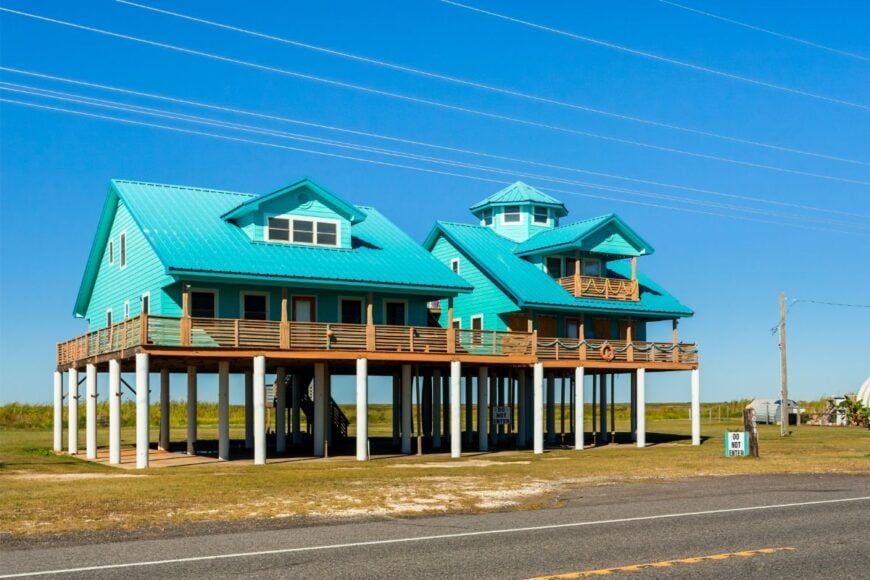
Johnson Bayou feels like the edge of the continent, more pelican and marsh than town. Houses perch on pilings above chenier ridges, and the Gulf’s breath sets the daily tempo.
People come to watch migrating birds sweep over the marsh, beachcomb along empty shorelines, and stargaze where the horizon swallows the last glow of day. Work centers on energy, refuge management, and coastal projects, with a tough self-reliance born of storms and solitude.
On quiet nights, you can hear the surf counting seconds. The salt air sands down every sharp thought. It’s seclusion with the sea as your neighbor.
Where is Johnson Bayou?
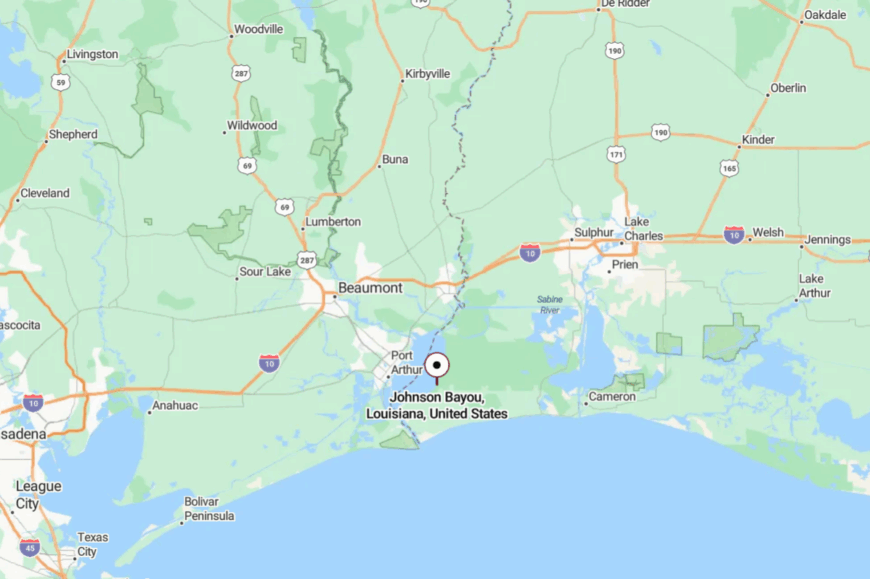
This Cameron Parish outpost sits along LA-82 near the Texas line, west of Holly Beach and east of Sabine Pass. It’s far from interstates and cities, surrounded by marsh, Gulf, and refuge lands.
You reach it by tracing the coast on a narrow ribbon of road that rides between sea and swamp. It feels like driving into a horizon that never quite arrives.
21. Hackberry – Marsh-Laced Village Between Lake and Gulf
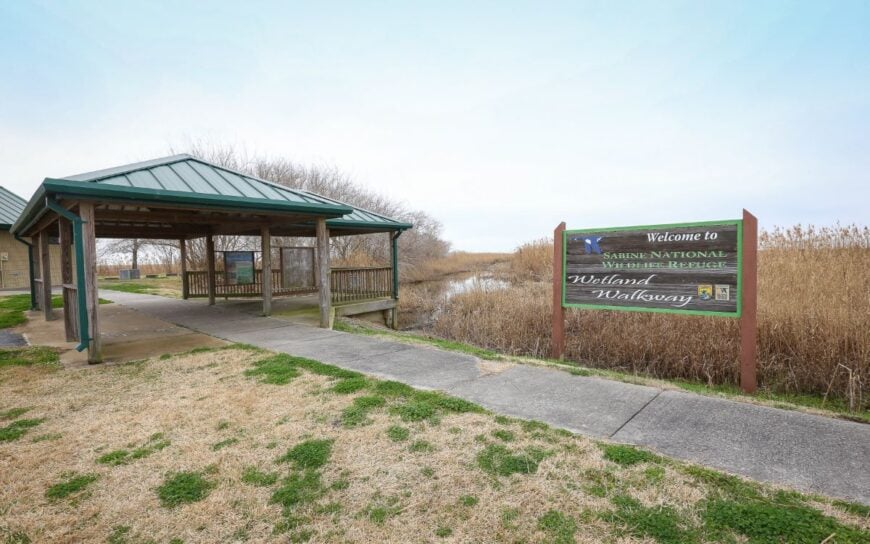
Hackberry is all water and wind, a settlement tucked into canals and marsh where boats outnumber billboards. Anglers launch before dawn toward Calcasieu Lake, while birders scan rookery islands and spartina edges.
The air smells of salt, diesel, and cordgrass—honest and elemental. Local life leans on fishing guides, industry, and the school’s calendar, with churches and diners doing the social stitching.
Sunsets turn the marsh copper as egrets stitch their way home. Nights are black enough to hear the tide breathing. Hackberry’s quiet works its way into you like a tide on sand.
Where is Hackberry?

In Cameron Parish, north of Calcasieu Lake, Hackberry sits off LA-27, about 25 miles south of Sulphur. Interstate miles fall away into drawbridges and causeways.
You arrive by skirting water on all sides, where road feels more suggestion than certainty. It’s close to the Gulf yet far from hurry.
20. Grand Chenier – Live Oaks, Cheniers, and the Old Coast Road
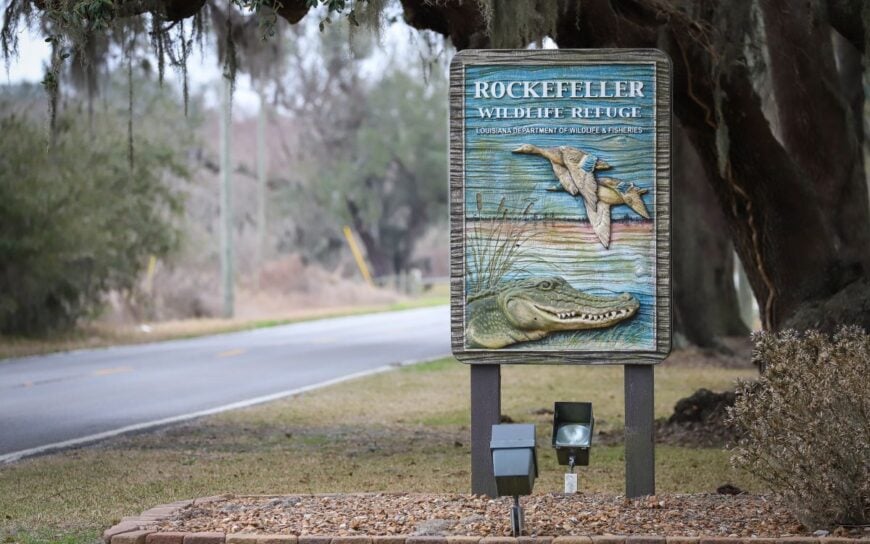
Grand Chenier stretches along ancient oak-crowned ridges that lift just above the marsh, a ribbon of high ground in a sea of grass. Houses crouch behind wind-bent live oaks, and the Gulf’s moods set the terms of any plan.
People fish, trap, guide hunts, and keep one eye on tide charts; churches and camp houses provide the rest of the calendar. There’s history here—storms remembered and stories that grow with each pot of gumbo.
The soundtrack is wind in oak leaves and boats thudding softly against pilings. Night brings a salt-sweet stillness few places can match. Grand Chenier is endurance wrapped in quiet.
Where is Grand Chenier?
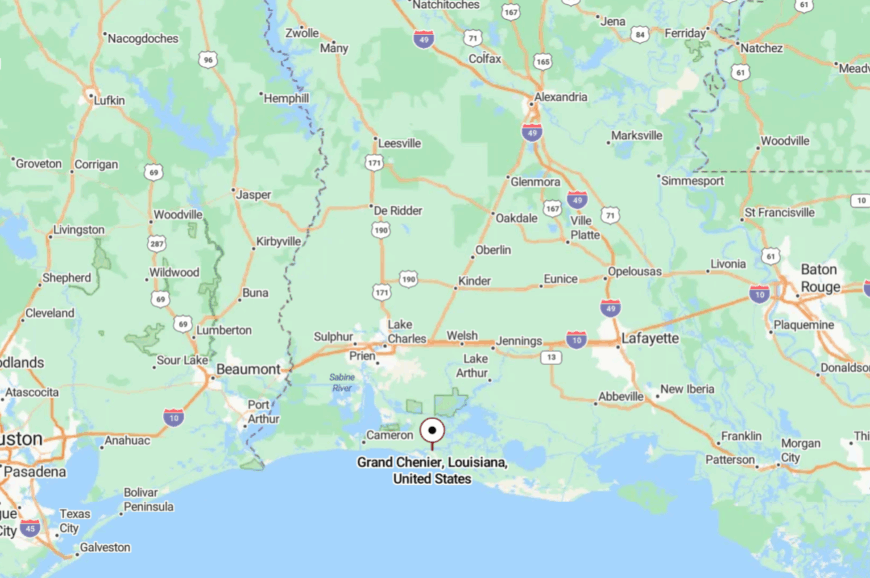
This Cameron Parish community sits along LA-82 about 40 miles southeast of Cameron and 70 miles south of Lake Charles. Interstates are a rumor; causeways and two-lanes are the reality.
You get there by following the old coast road as it threads cheniers and marsh. It feels like arriving on an island that never quite breaks free.
19. Creole – Crossroads of Marsh and Big Sky
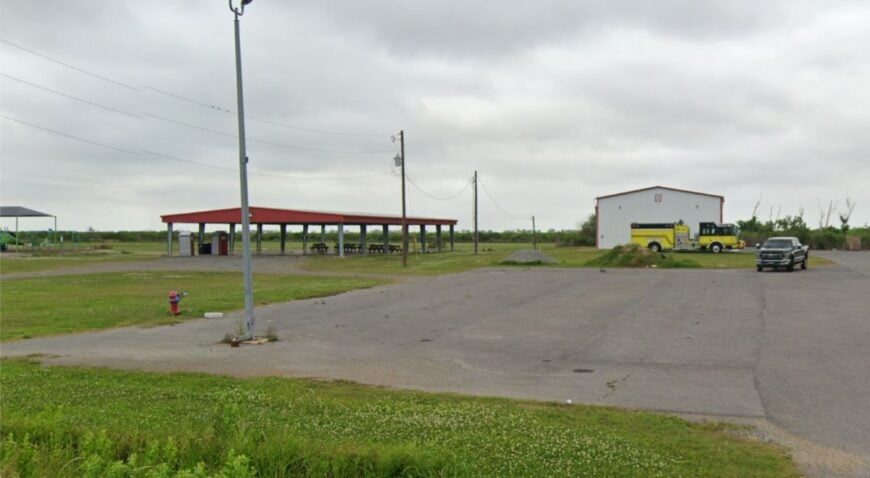
Creole is a name and a crossroads, a sparse cluster where LA-82 and LA-27 shake hands amid marsh and open sky. The wildlife refuge lies close, and white egrets cruise like slow paper kites.
Visitors stop for gumbo at a humble café, watch winter ducks raft the ponds, or push on to the beaches when tides are kind. Work ties to fisheries, energy, and refuge lands, but the daily rhythm belongs to weather and water.
Wind sings in power lines; terns stitch the horizon. It’s a place that teaches you to read clouds. Creole’s quiet is as clean as salt air.
Where is Creole?
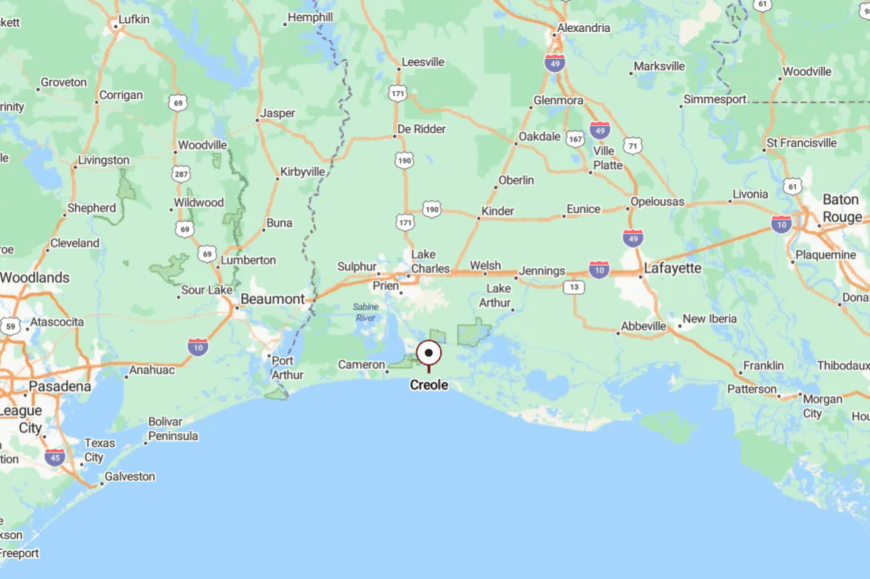
In central Cameron Parish, Creole sits about 15 miles east of Cameron on LA-82. It’s hemmed by marsh and miles from fast roads.
You reach it via long, flat causeways where sky and water trade places. The world thins out here—and that’s the point.
18. Holly Beach – The Cajun Riviera’s Wild Side
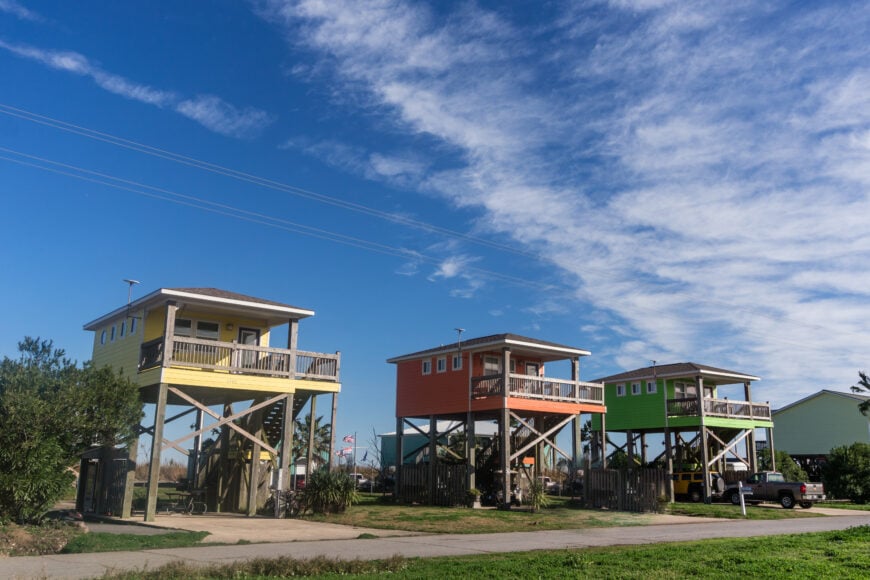
Holly Beach is a loose scatter of beach camps and stilt houses along a run of sand where the Gulf feels like your front yard. On weekdays, it can be empty but for gulls and crabs, with salt wind combing the dunes into soft ridges.
Folks surf-fish, shell-hunt for whelks and conchs, and settle into porch chairs as the line between sea and sky dissolves at dusk. There’s little in the way of shops; the charm is the space and the freedom to be un-busy.
Storms have remade it more than once, and that scrappy resilience is part of its magic. Nights crackle with constellations you forgot you knew. Holly Beach is the sound of the Gulf without a soundtrack.
Where is Holly Beach?
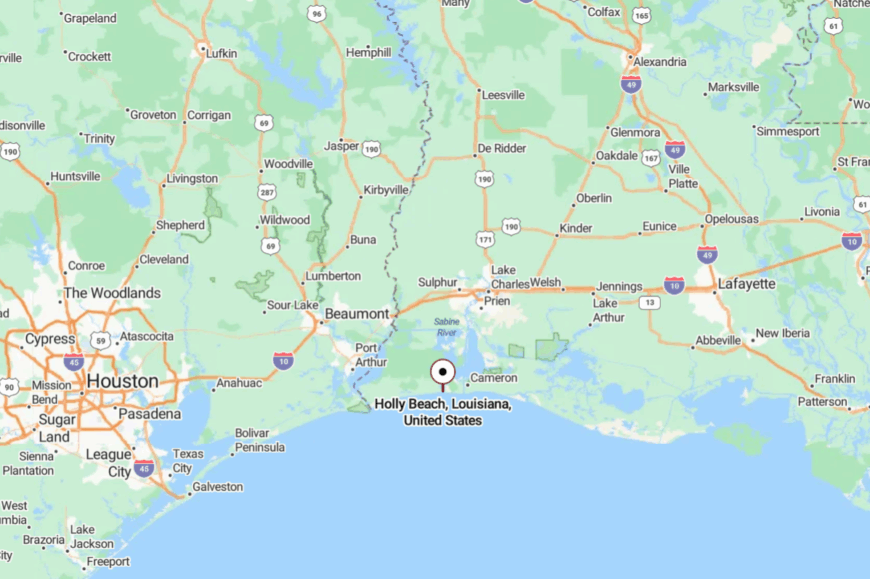
On LA-82 in Cameron Parish, Holly Beach sits about 35 miles west of Cameron and 45 miles south of Lake Charles. It’s far from interstates and guarded by miles of marsh.
You arrive along a skinny coast road with pelicans pacing your windshield. By the first boardwalk, the rest of life feels politely distant.
17. Oberlin – Prairie Edges and Courthouse Calm
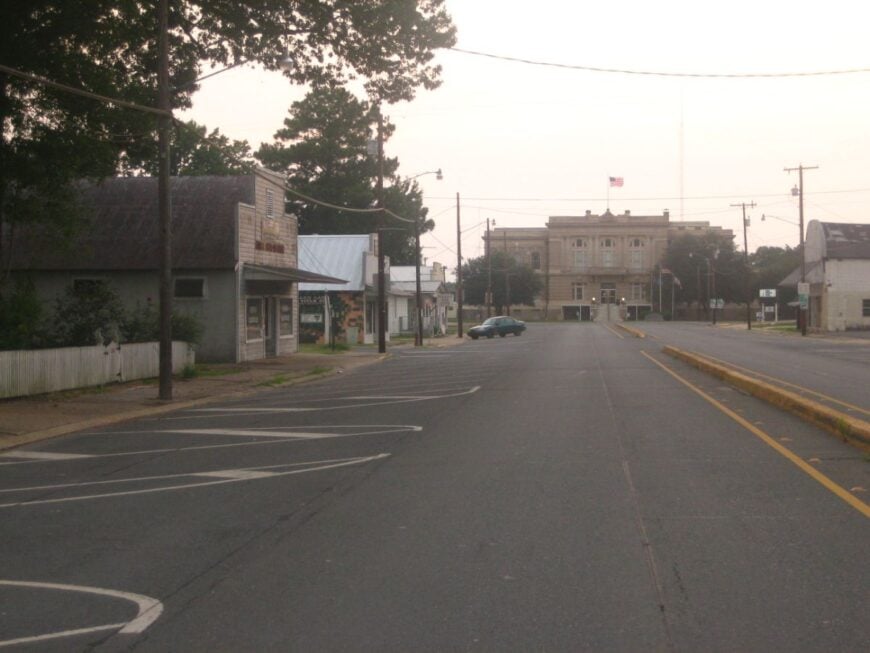
Oberlin carries the feel of an old parish seat where time walks instead of runs. The courthouse square, tidy neighborhoods, and prairie edges create a gentler horizon than pine country but just as quiet.
People fish along the Calcasieu River, browse small shops, and catch Friday-night games that pull the town together. Agriculture and parish offices anchor the economy, with timber and small businesses in the mix.
Evenings are cool under oaks that have seen a century of stories. The hum of traffic never rises above a murmur. Oberlin’s seclusion is courtesy of distance and restraint.
Where is Oberlin?

In Allen Parish, Oberlin sits along LA-26 about 25 miles north of Jennings and I-10. Major highways skirt the parish, leaving two-lanes and farm roads to do the connecting.
You arrive through fields, river bends, and a scatter of farmsteads. It feels like the point where urgency runs out of gas.
16. Reeves – One-Store Quiet on the Prairie Line
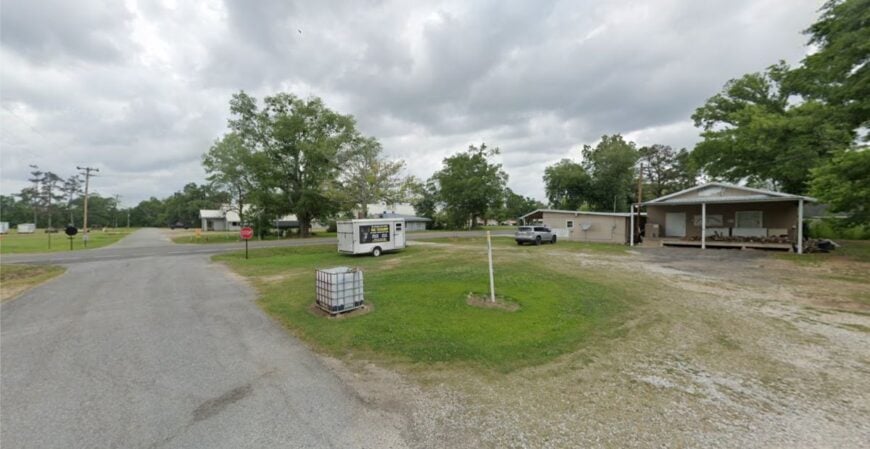
Reeves is the kind of place where a single gas station can double as a bulletin board, meeting hall, and a weather report. Homes sit far back from the road, framed by pasture and windbreaks of pine.
Locals fish the Calcasieu backwaters, tend cattle, and trade news at the feed counter. School events and church suppers keep the calendar from slipping completely into Sunday.
The night sky is a conversation of its own—big, plainspoken, and clear. You don’t come to Reeves to be seen; you come to see what quiet looks like. It’s the sort of calm that grows on you like shade.
Where is Reeves?
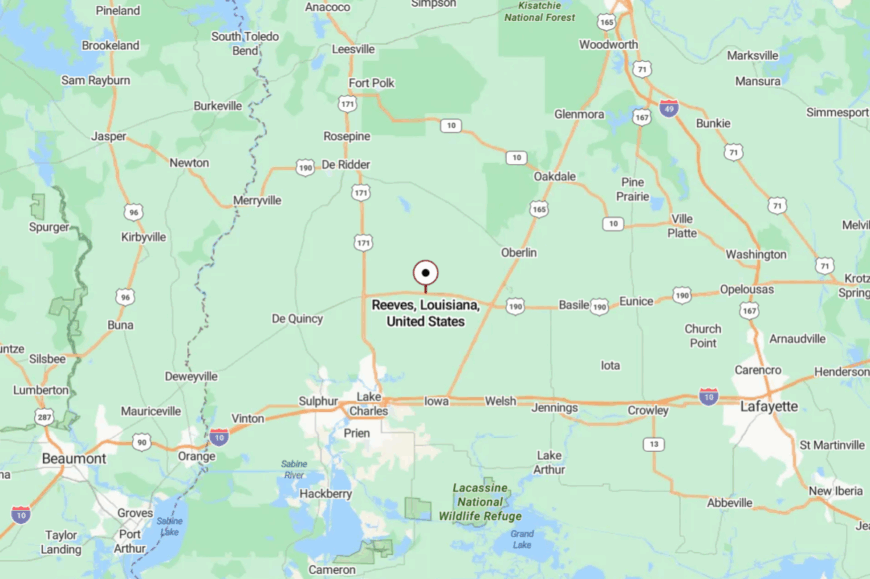
Reeves lies in Allen Parish along U.S. 190, about 15 miles east of DeRidder and 12 miles west of Kinder. Interstates keep their distance, and the land opens in long, level paragraphs.
You reach it by an easy run of two-lane through prairies and fencerows. The edges soften the farther you drive.
15. Elizabeth – Mill-Town Echoes in the Pines
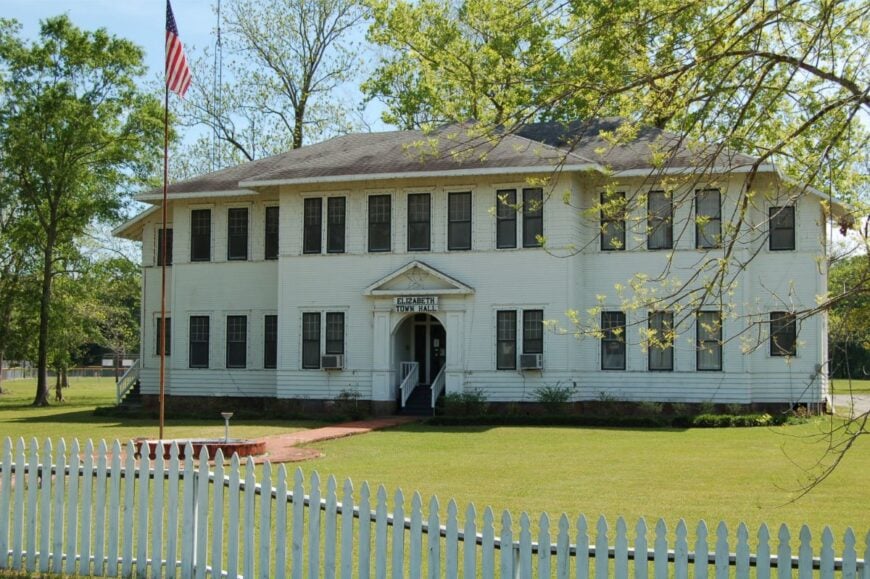
Elizabeth grew around a mill, and you can still feel that history in the street grid and stout old houses. Pines crowd the horizon, and mornings carry a resin-sweet note after summer rain.
People drive out to Bundick or Anacoco for fishing, stroll past the historic mill office, or sit awhile beneath oaks that remember the steam whistle. Timber, ranching, and school jobs keep pace with a life that values the local over the loud.
Nights feel unhurried, unlit, and kind. Strangers become neighbors in a handful of conversations. Elizabeth holds its quiet close, and shares it easily.
Where is Elizabeth
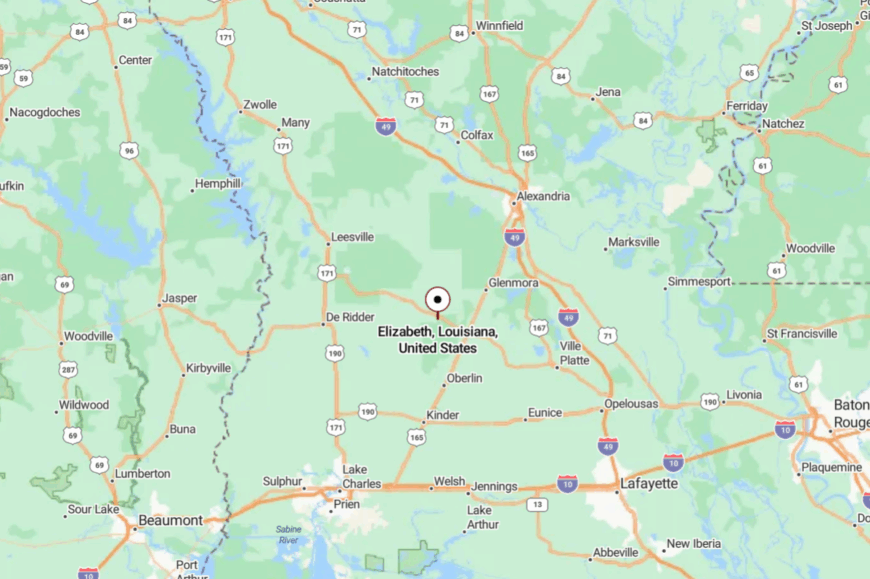
In southeastern Allen Parish, Elizabeth sits just off LA-112, about 18 miles east of DeRidder. It’s away from interstate thrum and buffered by timber tracts.
The approach is all gentle curves and pine curtains. You arrive feeling like you’ve taken the scenic route on purpose.
14. Marthaville – Hills, Heritage, and a Sleepy Main Street
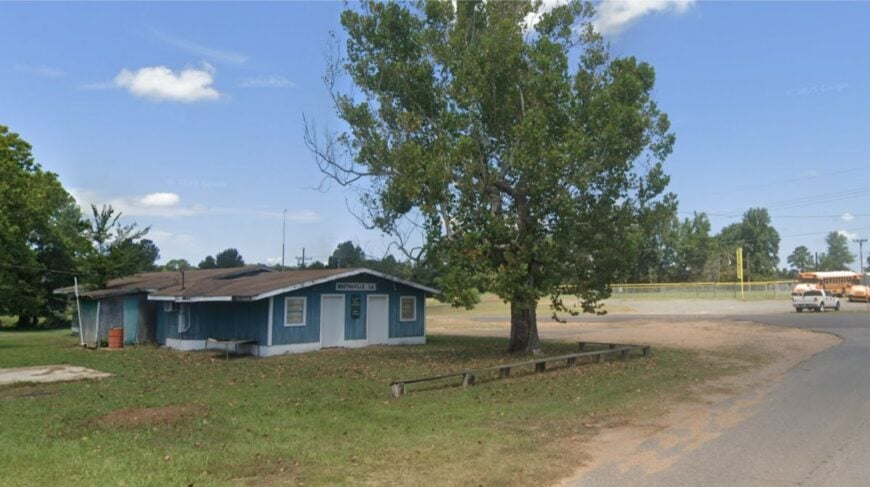
Marthaville rests on rolling high ground where the west side of Natchitoches Parish leans toward Sabine. A historic depot, porchy storefronts, and clapboard houses keep the past in arm’s reach.
Folks gather for small festivals, browse antiques, and detour to Kisatchie backroads when the dogwoods bloom. Ranching, timber, and school days set the tempo, with just enough local commerce to keep a pot of coffee going.
Wind moves through the pines like a hymn hummed under breath. After dark, the hills hold the quiet like a bowl. Marthaville is a gentle, hilltop hush.
Where is Marthaville?

About 22 miles west of Natchitoches along LA-120, Marthaville sits closer to Sabine Parish than to any interstate. Highways narrow to two-lane and the hills rise into view.
You reach it by winding through upland timber and pasture. It’s a short drive that feels like a step out of time.
13. Converse – Sabine Hill Country with Room to Breathe
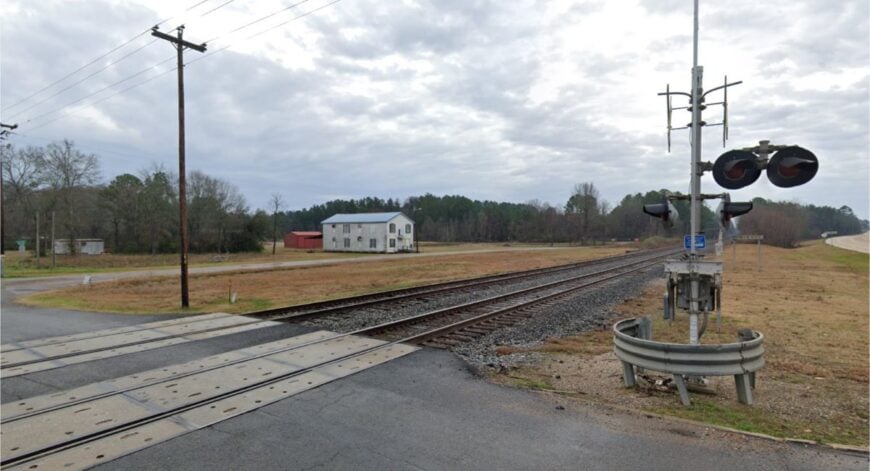
Converse keeps company with ridges and hardwood hollows, the kind of country that protects its quiet. The town’s tiny center gives way fast to pastures, hunting leases, and sandy-bottom creeks.
Anglers aim for Toledo Bend, while history buffs nose around old cemeteries and weathered churches. Jobs lean toward timber, ranching, and lake-driven services, with a healthy dose of do-it-yourself.
The night sky lays open from ridge to ridge. Even the dogs seem to bark softer out here. Converse is for people who like a little elbow room around their thoughts.
Where is Converse?
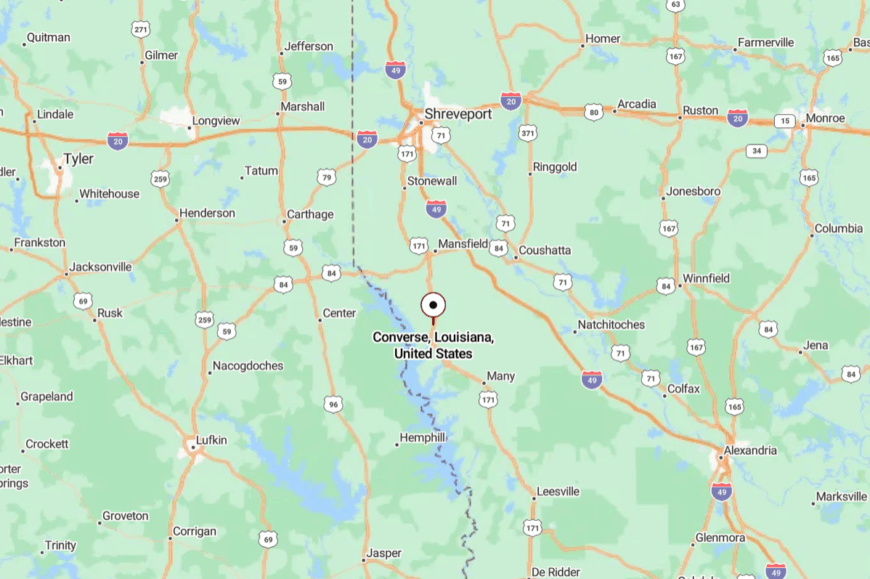
In Sabine Parish near the Texas border, Converse sits along U.S. 171 about 18 miles northwest of Many.
Interstates miss it by a wide margin; two-lanes thread the hills instead. You roll in through gentle grades and long views. It’s close to the lake, far from the rush.
12. Fisher – Storybook Mill Village in the Woods
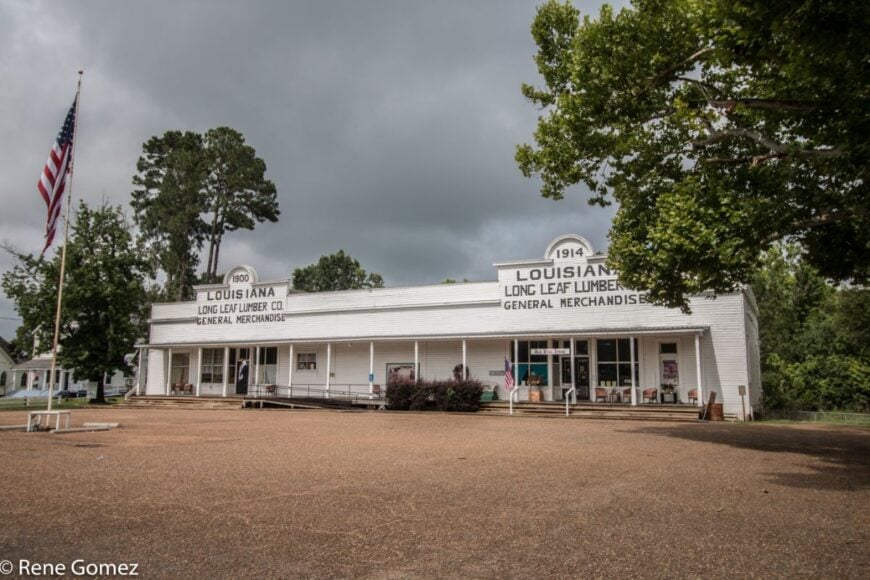
Fisher feels like a photograph that decided to keep living—an early 1900s mill village with a theater, depot, and neat rows of cottages. The surrounding forest wraps it like a quilt, muffling the modern world at the town limits.
Visitors stroll the historic district, listen to pickers on a porch, or head out to Sabine’s backroads for a lazy afternoon drive. Timber history and small-town arts anchor the spirit here, with community events that could pass for scenes from a novel.
Crickets provide the applause after sunset. Porch lamps sketch warm circles on wood-plank sidewalks. Fisher is a reminder that charm and quiet make fine neighbors.
Where is Fisher?

The village sits in Sabine Parish along LA-118, about 8 miles south of Many and well west of Natchitoches. No fast roads cross its doorstep—only two-lanes under pines.
You arrive by easing off U.S. 171 and letting the speed bleed away. By the depot, you’ll swear the clock ticks softer.
11. Provencal – Kisatchie Gateway with Small-Town Soul
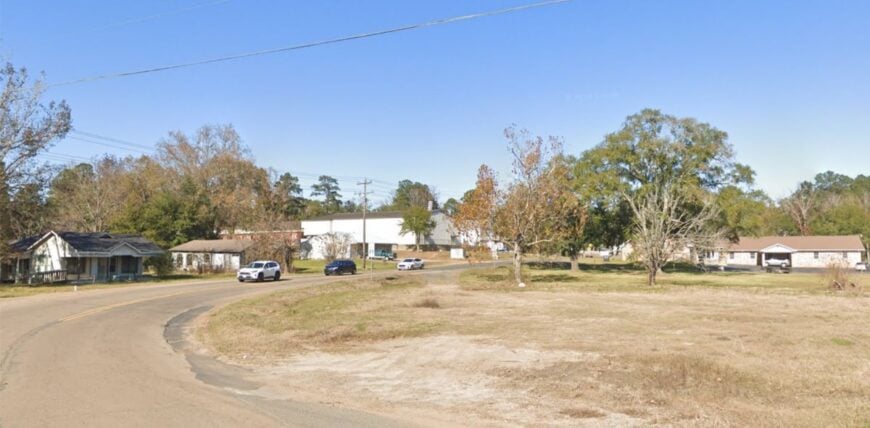
Provencal is a tidy pocket on the edge of big woods, where church steeples, a school, and a handful of shops set the scene. The pull of Kisatchie National Forest is close enough to feel—trailheads, longleaf savannas, and spring wildflowers just down the road.
Folks hike the Caroline Dormon trails, picnic beneath longleafs, and swap sightings of red-cockaded woodpeckers like baseball stats. Work ties to schools, timber, Fort Johnson commuters, and small businesses.
Evening settles with the scent of pine straw warming off the day. Stars find their way through generous gaps in the canopy. Provencal is a front row seat to quiet.
Where is Provencal?

In western Natchitoches Parish, Provencal sits along LA-117 about 12 miles southwest of Natchitoches. It’s tucked between rolling uplands and Kisatchie’s sandy ridges, well away from interstate noise.
You reach it by a graceful run of two-lane that trades fields for forest. It’s close enough to reach, but far enough to feel like you’ve stepped off the clock.
10. Grant: A Retreat into Louisiana’s Countryside

Grant is a peaceful rural community with a population of just over 1,000 people, making it an ideal spot for those seeking solitude. Nestled amidst forests and farmland, I love how Grant offers simple pleasures like fishing in nearby creeks or enjoying a leisurely hike through the woods.
Agriculture is a significant part of life here, with many residents engaged in farming and livestock. What makes Grant truly secluded is its lack of urban development and the expansive open spaces that surround it.
It’s a place where you can hear the rustle of the leaves and the calls of wildlife more clearly than the hum of traffic.
Where is Grant?

Located in Allen Parish, Grant sits in the heart of western Louisiana’s countryside. Its seclusion stems from the dense forests and farmlands that isolate it from larger towns. The limited roadways and minimal signage can make it feel like a hidden treasure.
To get there, I usually take Highway 377 from the nearby town of Oberlin, winding through scenic byways that lead into the quiet embrace of Grant. It’s a journey that takes you deeper into nature with every mile.
9. Longville: Seclusion and Space in Southwest Louisiana

With a population hovering around 600, Longville is a tranquil haven for those wanting to escape the hustle and bustle.
The town is surrounded by expansive open spaces and lush natural landscapes that provide endless opportunities for outdoor activities like hiking, bird watching, and photography.
Timber and agriculture are the main industries here, contributing to its quiet rural economy. What makes Longville especially secluded is the vast stretches of untouched land that seem to separate it from the rest of the world.
It’s easy to lose track of time here as you immerse yourself in the simplicity and beauty of nature.
Where is Longville?

Nestled in Beauregard Parish, Longville lies in the southwest region of Louisiana. Its seclusion is amplified by the extensive forests and lack of major highways passing through town.
To reach Longville, I usually take Highway 171, followed by a scenic drive along local roads that lead deeper into the countryside. The journey itself feels like a retreat, taking you away from urban landscapes into a serene rural setting where the modern world’s noise fades away.
8. Fields: Embracing the Simplicity of Rural Life

Fields is a tiny unincorporated community with a close-knit population of around 450 people. I appreciate the peaceful environment here, where life moves at a slower pace, and neighbors know each other by name.
The area is perfect for outdoor enthusiasts like me, offering hunting, fishing, and exploring the abundant undeveloped land. There aren’t many industries to speak of, which adds to the town’s charm and tranquility.
What sets Fields apart is the large lot sizes and the vast stretches of untouched nature that make it a private retreat away from the bustle of city life.
Where is Fields?

Located in Beauregard Parish, bordering Texas to the west, Fields is tucked away in the far reaches of western Louisiana. Its seclusion stems from its position far from major urban centers and the surrounding dense forests.
Getting there involves a scenic drive along Highway 389, which winds through rural landscapes and past small farms. I’ve always found the journey to Fields to be part of its allure, as the roads become quieter and the surroundings more serene the closer you get.
7. Singer: A Quiet Community Amidst Vast Woodlands

Singer is a small, peaceful town with a population of just over 300 residents. Surrounded by extensive woodlands, it’s a paradise for anyone who loves the outdoors as much as I do. The town offers activities like hiking, wildlife viewing, and simply enjoying the serene forest environment.
The main industry here is timber, reflecting the town’s deep connection with its natural surroundings. Singer’s minimal development and vast stretches of trees provide residents with solitude and an intimate connection with nature that’s hard to find elsewhere.
Where is Singer?

Singer lies in Beauregard Parish, nestled in the southwestern part of Louisiana. Its secluded nature is due in part to its location off major highways and the extensive woodlands that envelop the area.
To reach Singer, I usually take Highway 27, turning onto smaller local roads that weave through the forest. The journey itself is calming, as the dense canopy of trees signals your escape from the noise and rush of larger towns and cities.
6. Evans: Seclusion Along the Sabine River

Evans is a quaint community with around 500 residents, nestled along the banks of the Sabine River. I find the river adds a tranquil backdrop to life here, with opportunities for fishing, canoeing, and riverside picnics.
The area is lightly populated, and many locals are involved in agriculture and timber industries. What makes Evans particularly secluded are the natural barriers—the river itself and the surrounding forests—that provide privacy and a peaceful atmosphere.
It’s the kind of place where the sounds of nature are more prominent than any human-made noise.
Where is Evans?

Situated in Vernon Parish on the western edge of Louisiana, Evans borders Texas across the Sabine River. The town’s isolation is accentuated by its riverfront location and the dense forests that enclose it.
Reaching Evans involves taking Highway 111, a route I enjoy for its scenic views of the countryside and the gradual disappearance of urban landscapes. The journey to Evans feels like a step back in time, bringing you to a place where nature remains largely untouched.
5. Pitkin: A Haven Surrounded by Kisatchie National Forest

Pitkin is a small town with a population of approximately 600 people, tucked away next to the expansive Kisatchie National Forest. As a nature lover, I relish the numerous outdoor activities available here, like hiking, camping, and observing wildlife in their natural habitat.
The local economy is centered around forestry and agriculture, reflecting the town’s deep connection with the land. Pitkin’s secluded charm comes from its vast natural surroundings and the tranquil environment that makes it an ideal retreat from urban life.
Where is Pitkin?

Located in Vernon Parish, Pitkin is situated in western Louisiana, adjacent to the Kisatchie National Forest. Its seclusion is reinforced by the dense forests and lack of major transportation routes nearby.
To get there, I take Highway 10, enjoying the drive through tree-lined roads and the gradual immersion into wilderness. The absence of heavy traffic and commercial development makes the journey to Pitkin feel like an escape into serenity.
4. Ragley: Peaceful Living Amidst Louisiana’s Woodlands

Ragley is a quiet community of around 1,200 people, offering a serene lifestyle that I find incredibly refreshing. The town is characterized by large lot sizes and dense forests that give residents plenty of space and privacy.
Outdoor activities like horseback riding, hiking, and gardening are common pastimes here, enhancing the close connection with nature. The limited development and emphasis on residential living make Ragley a secluded spot where one can truly unwind and enjoy the simple pleasures of rural life.
Where is Ragley?

Situated in Beauregard Parish, Ragley sits comfortably in the southwestern part of Louisiana. Its seclusion is largely due to the surrounding woodlands and its distance from larger cities.
Accessing Ragley typically involves traveling along Highway 171, then veering off onto smaller, less-traveled roads. I always enjoy this approach, as the scenery transitions from urban to rural, signaling the calming solitude that Ragley offers.
3. Mittie: Unspoiled Wilderness and Quiet Living

Mittie is a tiny community with a population of around 300, offering an escape into unspoiled wilderness. I’m particularly drawn to its vast undeveloped lands, which provide a peaceful environment perfect for hiking, bird watching, and simply soaking up nature’s beauty.
There are no significant industries here besides small-scale agriculture, contributing to its quiet, laid-back atmosphere. Mittie’s remote setting and minimal development make it an ideal destination for those looking to disconnect from the fast-paced modern world.
Where is Mittie?

Located in Allen Parish, Mittie rests in the heart of western Louisiana’s forested regions. The town’s seclusion is heightened by the surrounding undeveloped lands and its distance from major highways.
Reaching Mittie involves taking Highway 26 and then navigating smaller country roads that weave through dense forests. I find that the journey itself reinforces the sense of tranquility that awaits in Mittie, as each mile brings you deeper into nature and farther from urban distractions.
2. Dry Creek: Serenity Amid Towering Pines

Dry Creek is a small, serene community with a population of about 250 people. Nestled amidst picturesque pine forests, it’s a haven for outdoor enthusiasts like myself who enjoy hiking, horseback riding, and camping.
The area is renowned for the Dry Creek Baptist Camp and surrounding trails that offer a peaceful retreat into nature. With no significant industries other than agriculture and forestry, Dry Creek maintains a quiet charm that feels worlds away from any bustling city.
It’s the low population density and the enveloping pine forests that give Dry Creek its secluded and tranquil atmosphere.
Where is Dry Creek?

Located in Beauregard Parish, Dry Creek lies in the western region of Louisiana. Its seclusion is due to its location off the main highways and the dense pine forests that surround it.
To reach Dry Creek, I usually travel along Highway 113, which winds through scenic woodlands and rural landscapes. The drive itself is calming, and as you approach Dry Creek, you can feel the serenity of the towering pines welcoming you into this peaceful enclave.
1. Sugartown: A Sweet Escape into Nature’s Embrace

Sugartown is a charming rural community with a population of around 150 people, making it one of the most secluded spots I’ve discovered in western Louisiana.
Surrounded by dense forests, Sugartown offers a tranquil environment where traditional countryside living thrives. Locals engage in small-scale farming and forestry, preserving the area’s rustic heritage.
I enjoy visiting the historic Sugartown Cemetery and exploring the nearby nature trails that offer a serene escape. It’s the sparse population and the enveloping woods that make Sugartown a peaceful haven away from the clamor of modern life.
Where is Sugartown?

Nestled in Beauregard Parish, Sugartown is tucked away in the heart of western Louisiana’s timberlands. Its seclusion comes from the dense forests that surround it and its distance from any major urban centers.
Getting to Sugartown involves a scenic drive along Highway 113, where the roads become increasingly quiet and the trees form a lush canopy overhead. I find that reaching Sugartown feels like stepping into a simpler, more peaceful time, making the journey just as rewarding as the destination itself.






